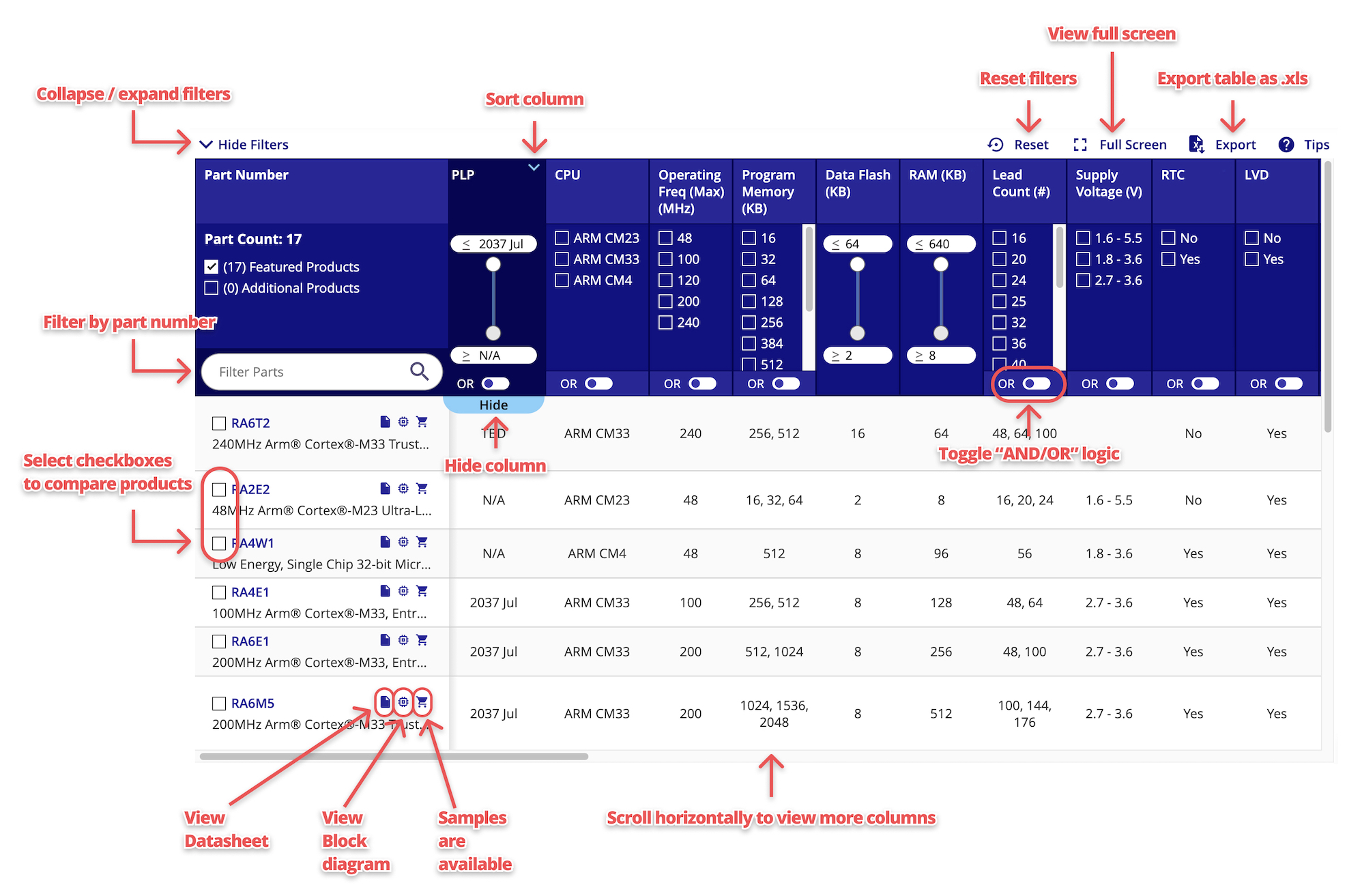
-
-
设计资源
- 设计和开发
- 特色设计工具
- 合作伙伴
- 内容和培训
Rad Hard Power Sequencing

Renesas' radiation hardened quad power supply sequencers are designed to drive point-of-load (POL) regulators that power high-performance FPGAs and complex, multi-rail power systems.
产品选型表
Supply Voltage (V) |
Supply current (mA) |
Number of Controlled Supplies (#) |
Output Type |
Cascadable |
Programmable Delay |
PGOOD Timer |
High Dose Rate (HDR) (krad (Si)) |
Low Dose Rate (LDR) (krad (Si)) |
DSEE (SEL, SEB, etc.) (MeV*cm2/mg) |
Lead Count (#) |
Pkg. Type |
Temp. Range |
DLA SMD |
Qualification Level |
Models Available |
|
|---|---|---|---|---|---|---|---|---|---|---|---|---|---|---|---|---|
| 器件号 | ||||||||||||||||
| Radiation Hardened Quad Power Supply Sequencer | 3 - 13.2 | 3.5 | 4 | Enable Open Drain | 是 | 是 | 是 | 100 | 75 | , SEL free | 18 | CFP, DIE | -55 to +125°C, -55 to 125°C | 5962R1722501V9A, 5962R1722501VXC | PROTO, QML Class V (Space) | |
| Radiation Hardened Quad Power Supply Sequencer | 3 - 13.2 | 3.5 | 4 | Enable Open Drain | 是 | 是 | 是 | 75 | , SEL free | 18 | CFP, DIE | -55 to +125°C, -55 to 125°C | 5962L1722502V9A, 5962L1722502VXC | PROTO, QML Class V (Space) |

Tips for Using This Parametric Table:
- Hide Filters button in header: Collapse or expands filters
- Column sort buttons in header: Sort Column alphabetically / numerically descending or ascending
- Reset button in header: Reset all filters to the page default
- Full Screen button in header: Expand the table to full screen view (user must close out of full screen before they can interact with rest of page)
- Export button in header: Export the filtered results of the table to an Excel document
- Filter parts search bar in header: Type to filter table results by part number
- Hide column button in column headers: Select to hide columns in table
- AND / OR toggle switches in header: Toggles the logic of this particular filter to be “AND” or “OR” logic for filtering results
- Multiselect checkboxes at beginning of each row in table: Select these checkboxes to compare products against each other
- Document icon next to product name in row: View the featured document for this product
- Chip icon next to the right of the document icon in row: View the block diagram for this product
- Cart icon to the right of the chip icon: Indicates that samples are available for this product
视频和培训
Over the past 19 years, the space industry has placed a higher value on understanding the effects that long-term, low dose radiation can have on ICs. Intersil's radiation testing specialist Nick van Vonno discusses why this shift has occurred and what we are doing to address this change.
Transcript
There are many different types of radiation, and indeed Intersil addresses two of these. Intersil addresses total dose testing which is basically gamma rays. Okay, and at both high and low dose rate, as we'll get into later. Intersil also addresses single event effects of a fairly broad range, and those are typically addressed by heavy ion testing.
Low dose rate testing, you have to contrast this really in order to understand this. You have to look historically at how total dose testing which is done with gamma rays, how that's been performed. Historically this has been performed at what we call high dose rate, and typically to put this in some numbers, that would run somewhere in the range of 50rad to 300rad/s.
Low dose rate, on the other hand, is a much, much slower dose rate. The generally accepted number, and the one we perform our work in, is 0.01rad/s. You see how far that's away from 300rad a second. And that can also be expressed as 10mrad/s if you'd like.
Now why are we goofing with that? And the answer is that the low dose rate is what happens in space. Dose rates in space are almost uniformly low to the order of 10mrad/s. Low dose rate radiation testing has been a, let's call it a hot topic in silicon advanced research since about 1992, okay? In 1992, some researchers out at Mich research came up with a very unusual finding which showed that certain parts that looked very good at high dose rate degrade with amazing rapidity, orders and orders of magnitude, worse at low dose rate. And so, that was not a fully intuitive result, and indeed it had to be repeated, and in the intervening 19 years there is a very large amount of work that's been done on low dose rate effects. And, as we've learned about how different parts react in low dose rate, we've, as an industry, we've swung over more towards a low dose rate testing emphasis rather than a high dose rate testing emphasis.